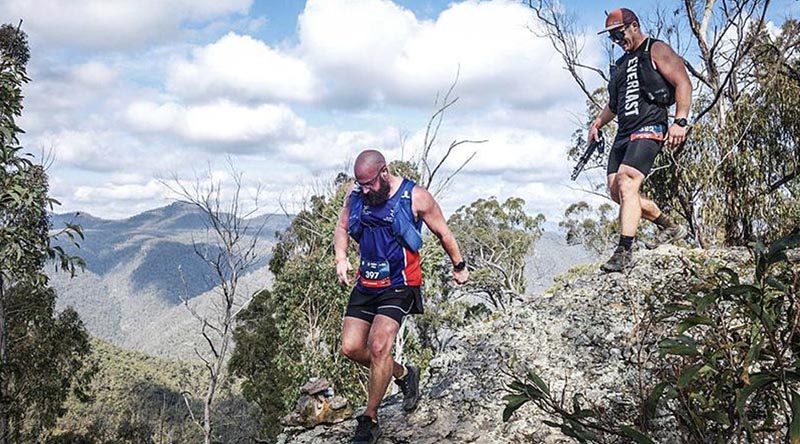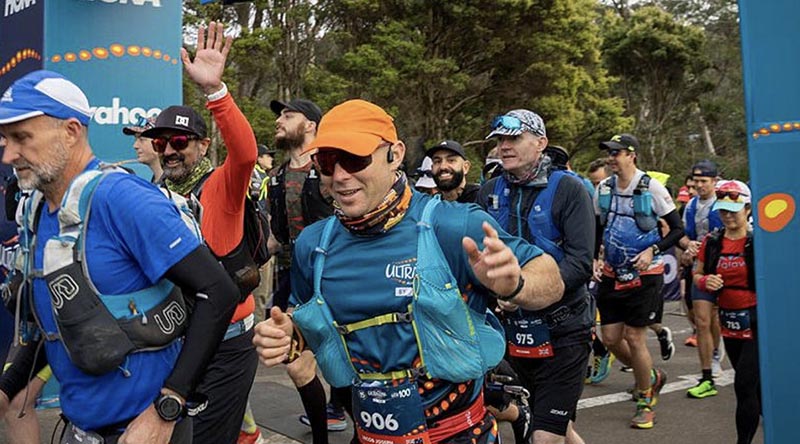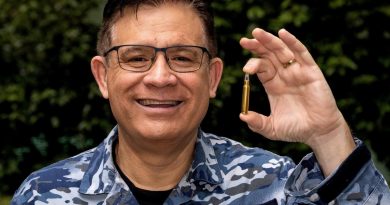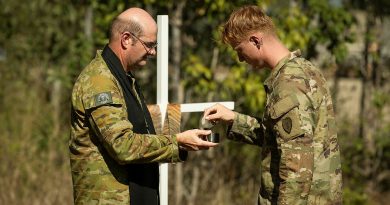ARMY Newspaper reporter runs 100km Ultra-Trail
Share the post "ARMY Newspaper reporter runs 100km Ultra-Trail"

ARMY Newspaper reporter Corporal Jacob Joseph recently completed the 100km Ultra-Trail Australia and tells the story of pushing his body and mind to new limits in completing his longest-ever run.
CAPTION: Corporal Jacob Joseph, a reporter with ARMY Newspaper in Canberra, sets off at the start of the 100km Ultra-Trail Australia. Photo by Camila Leon.
Every year in May, groups of scraggly-looking runners hobble their way along the streets of Katoomba, having run anywhere between 11 and 100km across the Blue Mountains in the world’s second-largest trail-running event.
Ultra-Trail Australia (UTA) draws more than 5000 participants and is the national crown jewel for professional athletes and weekend warriors alike looking to test their endurance.
Among them were a bunch of runners from the ADF Running and Athletics Association, including yours truly.
I signed up for the 100km race after dipping a toe in the world of Ultra with a handful of 56km events already under my belt.
Being my first attempt at this distance, I leaned on the experience of seasoned Ultra runners, like Lieutenant Mark Hollingsworth and Group Captain Ben Poxon, for advice.
The bearded and thin Group Captain Poxon started running ultras in 2012 and completed his third UTA this year in a respectable 15 hours and 57 minutes.
“It’s just about achieving the course on your own and getting to the end,” Group Captain Poxon said.
“If you’ve never run 100 kilometres, your goal should be to run 100 kilometres no matter how long it takes.
“Whatever time you get, improve on it next time.”
As the first runners took off under the dawning sky, I saw the group captain at the start line.
He was seeded and set to start before me.
Contrary to his earlier advice about running my own race, he encouraged me to try to catch him.
In the 16-and-a-half hours it took me to finish I didn’t see him again.
I saw my first ADF singlet around 40km, or six hours in, when I came across Acting Sub-Lieutenant Scott Tunnard.
As we ran down a path on one of the more farm-like sections, he told me he was taking it easy and wanted to finish without “blowing out a knee” so he could keep running in the lead-up to his 100-mile race in France this September.

Shooting for the stones
Underscoring the popularity of UTA is the fact it’s UTMB branded – short for Ultra Trail du Mont Blanc, both a franchise and an event.
MB World Series races like UTA are held all over the world.
Runners who participate in world series events get a number of running stones based on distance and event status.
The 100km runners are awarded three stones for finishing.
Runners get double for completing a world major, like Doi Inthanon in Thailand or Canyons in USA.
The more stones you get, the higher your index and the greater your chances of winning the lottery to race in the finals, which culminates with a 100-mile ultra across the renowned Mont Blanc in the French Alps.
Some people will never win the lottery to race at Mont Blanc – but, Acting Sub-Lieutenant Scott Tunnard got a ticket on his first attempt.
I said goodbye to Scott, focused on putting one foot in front of the other and running more than walking.
The following hours passed quickly and soon it was dark.
After 80km, the course has a 10km steep downhill section followed by 10km uphill, topped off by the iconic Furber Steps to reach the finish.
To my surprise, I finished the last 5km of the track hobbling along with my PTI from the School of Infantry in 2018.
With trail running, ultras in particular, there’s a collegiate sense among participants and, in the darkness of the night when the small circle of your head torch is the limit of your world, a chat with someone else slugging it out on the trail makes the kilometres easier.
Army’s Sergeant Thomas Hunter was one of the last people I expected to meet on the challenging final ascent.
It was hard to fathom that, of the 834 finishers from 5000 starters, I would have a pre-existing connection to the person with whom I climbed the last 970 stairs to the top.
In a bizarre and beautiful moment of self-reflection, he asked me whether there was anything he could have done better while at Singleton.
Running in darkness, generally alone, the journey is mostly introspective, which is why his question struck me.
This moment was indicative of the mental journey that happens during Ultra and how personal growth can come often during times of self-inflicted pain and monotony that forces the mind and body into a meditative state.
And maybe this is why people who do it keep coming back.
I’ve already signed on for another 100km race in December, this time in Kosciuszko National Park, confident I can make the distance but curious to find out how quickly and what may happen along the way.

.
.

.
.
Share the post "ARMY Newspaper reporter runs 100km Ultra-Trail"





